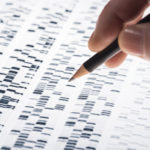It’s simple. Diagnosis is the foundation of modern medicine. Without the right diagnosis, the patient can’t get the right treatment.
But that doesn’t mean that diagnostics is easy.
In fact, most Americans will experience a diagnostic error at least once in their lifetime, and the patient deaths that occur today due to these errors are estimated at between 40,000 and 80,000 per year. These diagnostic errors and other healthcare inefficiencies cost the U.S. economy $750 billion each year.
Clearly, this is a problem that needs to be solved.
Multi-omic approaches, or Panomics, present one solution. These techniques utilize massive datasets to view the biological interactions within the entire complex human system. This brings a multi-dimensional approach to detecting, diagnosing and treating various disease states, inclusive of all the functions of human genomics.
As of right now, inaccurate, late, delayed and misdiagnoses are an ongoing and pressing issue. In fact, of 6,000 cases studies at Johns Hopkins Hospital, 1 out of every 71 cancer cases at the center were misdiagnosed, and 1 out of every 5 cancer diagnoses were misclassified.
In terms of rare diseases (or those that have less than 200,000 reported cases), the problem of misdiagnosis is even more severe, affecting 350 million people globally. More than half of these rare diseases affect children and 30% of patients die before the age of 5.
Where do we go from here?
As compared to studies of a single omics type, multi-omics offers the opportunity to understand the flow of information that underlies disease. Omics technologies provide the tools needed to look at the differences in DNA, RNA, proteins, and other cellular molecules between species and among individuals of a species. Due to this, omics experiments can often be conducted in high-throughput assays that produce tremendous amounts of data on the functional and/or structural alterations within the cell.
A revolution in precision diagnosis
We in the midst of a transition from one-size-fits-all to a precision medicine model with multi-level patient stratification. As part of this, we’re seeing “smart medicine” decreasing the costs of everything from high-throughput sequencing technologies, to mass spectrometry and genetic sequencing. What’s more, AI and deep learning are improving the speed and power of imaging analytics, while wearables and smart devices are bringing real-time data collection and analysis to the masses at long last.
Putting this all together with multi-omic techniques, we’re seeing three major benefits:
Improved patient care: Better, tech enabled screen practices are reducing diagnostic errors, leading to more early stage diagnoses and helping doctors make the right treatment decisions the first time.
Decreased healthcare costs: As mentioned, medicine has long been a one-size-fits-all science. More people suffer from most of the same conditions, and most of the same treatments work for most of them. But with precision diagnostics doctors are able to reduce the risk associated with this kind of trial-and-error treatment and cut down on overprescription, ensuring that patients get the right treatment the first time. This will also help shorten the length of time between initial diagnosis and the start of treatment, reduce hospital stay times and even cut down on the amount of time needed to conduct clinical trials.
Data-driven decision making: High-throughput technologies like multi-omic have revolutionized medical research, and that Big Data approach is finding its way into the clinical setting. This focus on data can be seen in everything from bioinformatics (incorporating systems biology and computational biology), the use of electronic health records, real-time monitoring via wearable, and more.
What does this mean for the future?
Innovation, technology integration and new customer segments will drive business growth for healthcare firms, and researchers are already exploring ways to integrate multi-omics data for clinical interpretation of sequencing data. This multi-omics data computation holds significant opportunities for informatics companies and stands to revolutionize the practice of diagnostics over the next decade.












